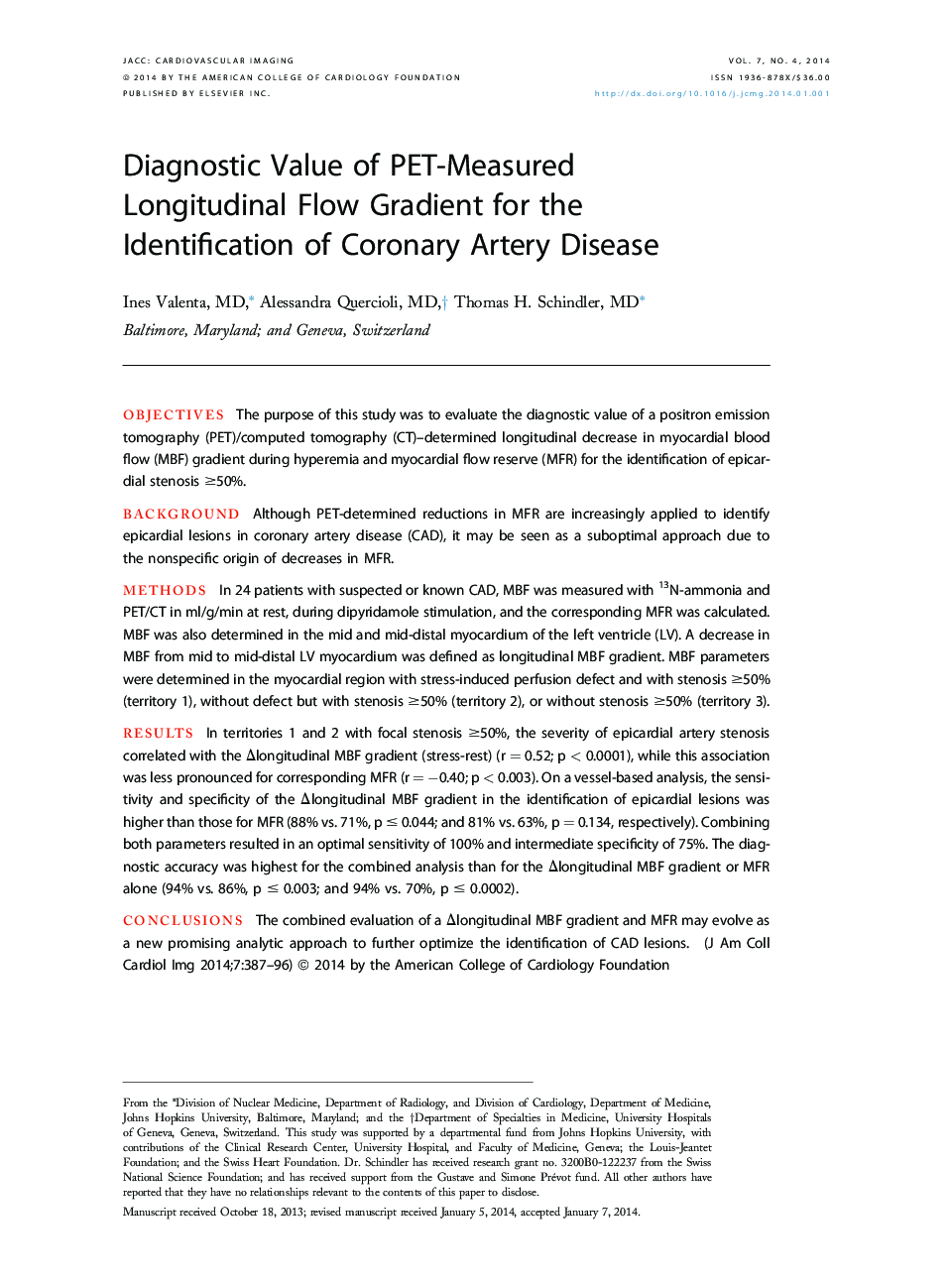| کد مقاله | کد نشریه | سال انتشار | مقاله انگلیسی | نسخه تمام متن |
|---|---|---|---|---|
| 2938001 | 1176916 | 2014 | 10 صفحه PDF | دانلود رایگان |

ObjectivesThe purpose of this study was to evaluate the diagnostic value of a positron emission tomography (PET)/computed tomography (CT)–determined longitudinal decrease in myocardial blood flow (MBF) gradient during hyperemia and myocardial flow reserve (MFR) for the identification of epicardial stenosis ≥50%.BackgroundAlthough PET-determined reductions in MFR are increasingly applied to identify epicardial lesions in coronary artery disease (CAD), it may be seen as a suboptimal approach due to the nonspecific origin of decreases in MFR.MethodsIn 24 patients with suspected or known CAD, MBF was measured with 13N-ammonia and PET/CT in ml/g/min at rest, during dipyridamole stimulation, and the corresponding MFR was calculated. MBF was also determined in the mid and mid-distal myocardium of the left ventricle (LV). A decrease in MBF from mid to mid-distal LV myocardium was defined as longitudinal MBF gradient. MBF parameters were determined in the myocardial region with stress-induced perfusion defect and with stenosis ≥50% (territory 1), without defect but with stenosis ≥50% (territory 2), or without stenosis ≥50% (territory 3).ResultsIn territories 1 and 2 with focal stenosis ≥50%, the severity of epicardial artery stenosis correlated with the Δlongitudinal MBF gradient (stress-rest) (r = 0.52; p < 0.0001), while this association was less pronounced for corresponding MFR (r = −0.40; p < 0.003). On a vessel-based analysis, the sensitivity and specificity of the Δlongitudinal MBF gradient in the identification of epicardial lesions was higher than those for MFR (88% vs. 71%, p ≤ 0.044; and 81% vs. 63%, p = 0.134, respectively). Combining both parameters resulted in an optimal sensitivity of 100% and intermediate specificity of 75%. The diagnostic accuracy was highest for the combined analysis than for the Δlongitudinal MBF gradient or MFR alone (94% vs. 86%, p ≤ 0.003; and 94% vs. 70%, p ≤ 0.0002).ConclusionsThe combined evaluation of a Δlongitudinal MBF gradient and MFR may evolve as a new promising analytic approach to further optimize the identification of CAD lesions.
Journal: JACC: Cardiovascular Imaging - Volume 7, Issue 4, April 2014, Pages 387–396